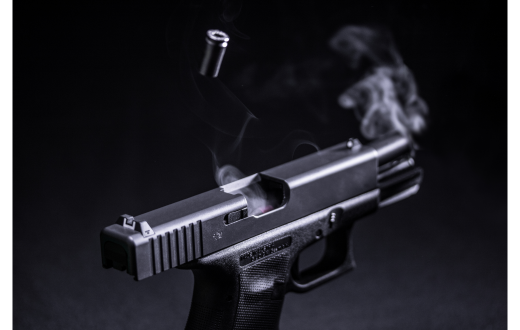In the world of firearms, one crucial factor that can significantly impact accuracy is recoil. Recoil, also known as kickback, refers to the backward movement of a firearm upon firing. It is an inherent consequence of Newton’s third law of motion, which states that for every action, there is an equal and opposite reaction. Understanding the science behind recoil management and implementing effective techniques can lead to improved accuracy and control. In this blog post, we will delve into the science behind recoil, explore its effects on accuracy, and discuss strategies for minimizing kickback.
Understanding Recoil
Recoil is primarily caused by the expulsion of high-pressure gas produced by the combustion of gunpowder in the firearm’s chamber. When the trigger is pulled, the firing pin strikes the primer, igniting the propellant. This rapidly converts the solid powder into a large volume of gas, creating immense pressure within the confined space of the chamber. The expanding gases force the bullet out of the barrel, propelling it forward, while simultaneously pushing the firearm backward.
Effects of Recoil on Accuracy
Recoil can negatively impact accuracy in several ways. First, it introduces movement and disruption to the shooter’s stance and grip. This can result in a misalignment of the sights, leading to an inaccurate shot. Second, excessive recoil can cause flinching or anticipation, where the shooter involuntarily reacts to the anticipated recoil before the shot is fired. This can disturb the proper follow-through, affecting both aim and trigger control.
Minimizing Recoil: Techniques and Strategies
Proper Grip and Stance: Establishing a solid foundation is crucial for managing recoil. The shooter should maintain a firm grip on the firearm, ensuring proper contact with the backstrap and front strap. The stance should be balanced, with the feet shoulder-width apart, knees slightly bent, and the upper body leaning slightly forward. This posture helps absorb and distribute recoil forces more effectively.
Recoil Management Devices: Utilizing recoil management devices can significantly reduce kickback. Various devices such as recoil pads, muzzle brakes, and compensators are designed to redirect gas and mitigate recoil forces. Recoil pads, usually made of rubber, absorb and cushion the impact against the shooter’s shoulder, reducing felt recoil. Muzzle brakes and compensators redirect gasses in opposite directions, helping counteract the backward force, resulting in reduced muzzle rise and improved control.
Proper Ammunition Selection: The choice of ammunition can influence recoil. Lighter bullets generally produce less recoil compared to heavier ones. Similarly, selecting ammunition with lower powder charges or using reduced recoil loads can help minimize kickback while maintaining sufficient accuracy for the intended purpose.
Training and Technique: Regular practice and training are essential for developing proper shooting techniques and managing recoil effectively. This includes practicing a smooth trigger pull, maintaining focus on the front sight, and employing controlled breathing. By mastering these techniques, shooters can minimize unnecessary movement and maintain better accuracy, even under recoil.
Firearm Design and Weight: The design and weight distribution of a firearm can influence recoil management. Heavier firearms tend to have less perceived recoil as they absorb and distribute the forces more efficiently. Additionally, ergonomics play a crucial role, with features such as recoil pads, interchangeable grips, and adjustable stocks allowing shooters to customize their firearms to suit their individual needs and preferences.
Recoil management is a critical aspect of achieving accurate and controlled shooting. By understanding the science behind recoil and implementing effective techniques, shooters can minimize kickback and enhance their accuracy. Through proper grip and stance, utilizing recoil management devices, selecting suitable ammunition, and continuous training, shooters can develop the necessary skills to mitigate the disruptive effects of recoil. With practice and a systematic

